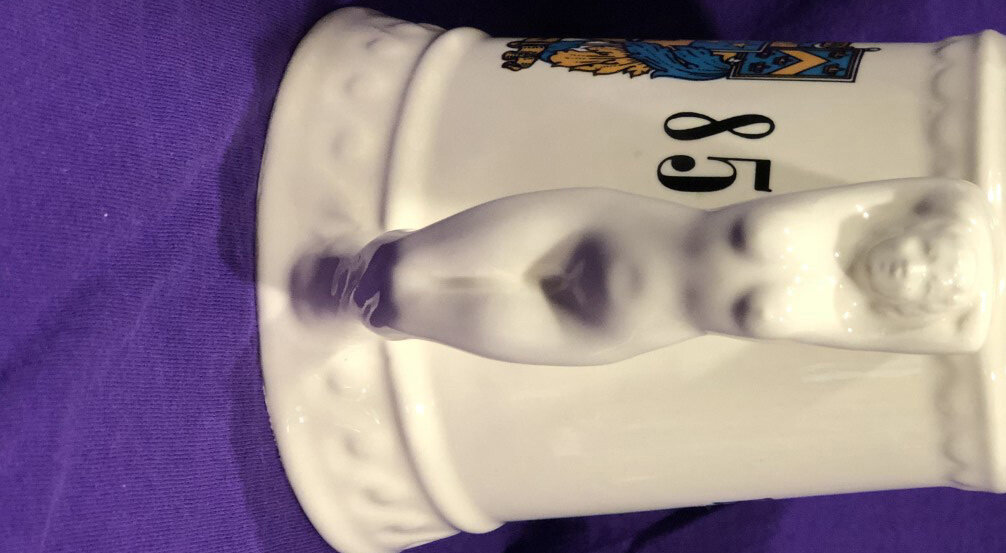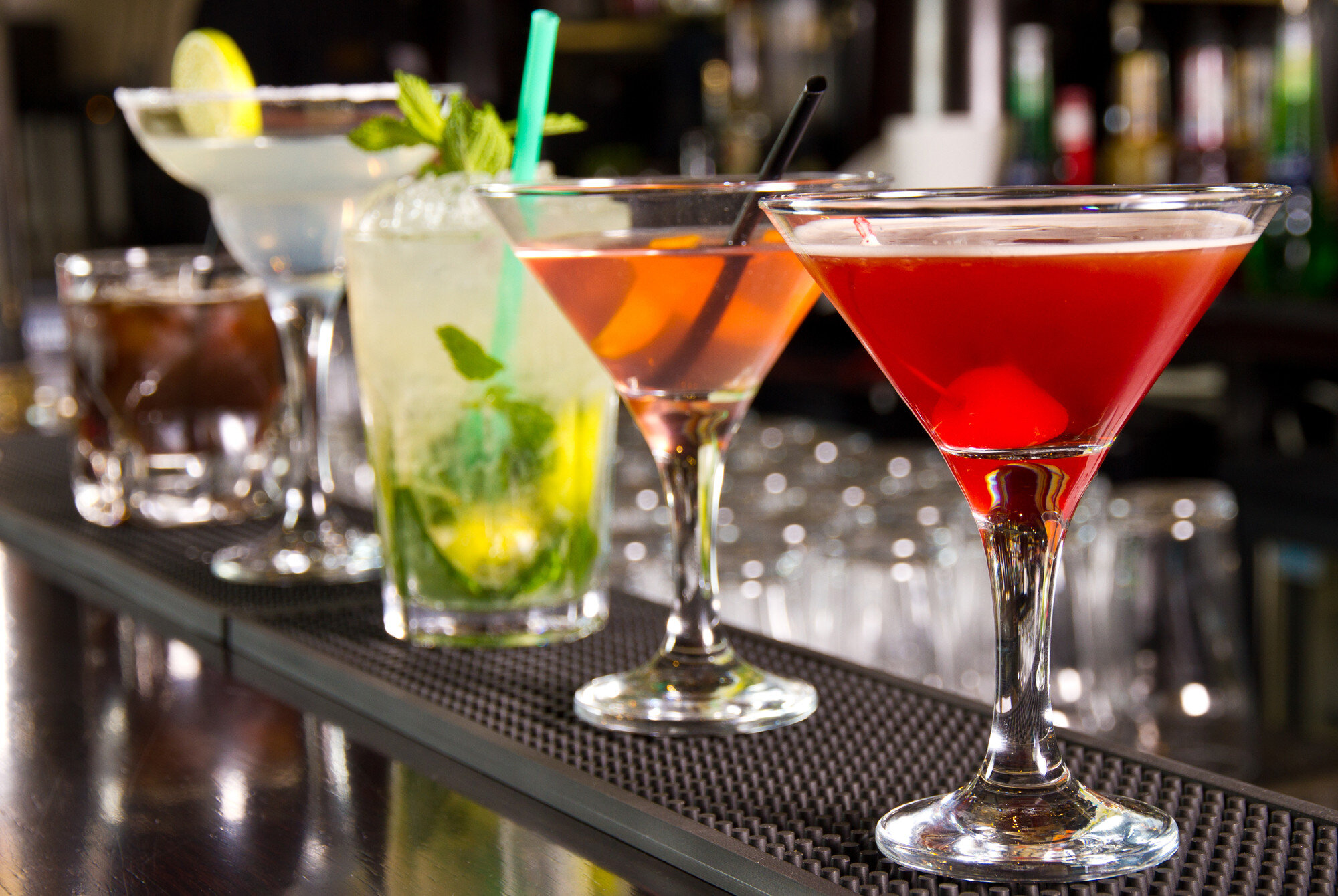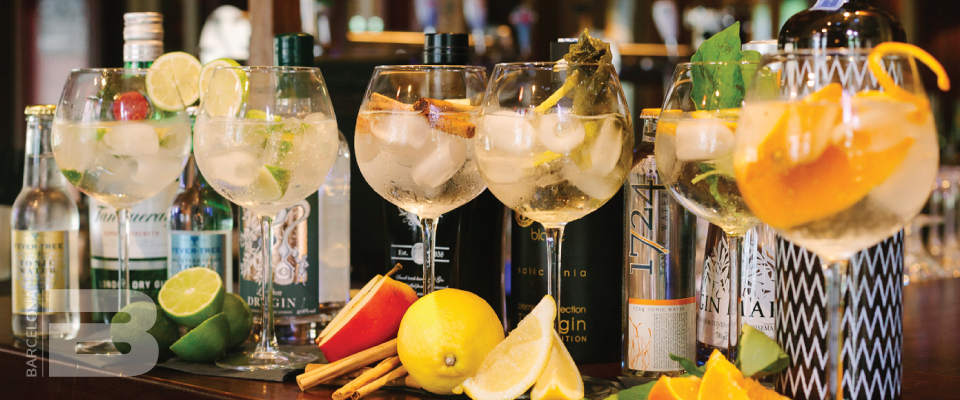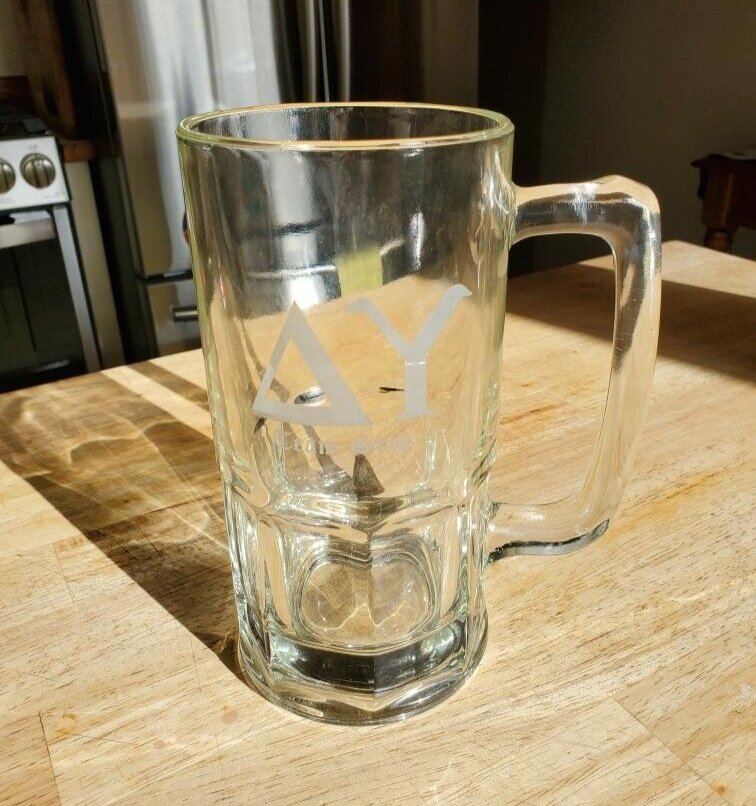Instruments of Peace
Much like any professional sport, the hardware of drinking GTs must be properly standardized: the holy serving glass. In the days before such standardization, recipes that were delicious within one clan could easily taste awful when shared with another clan, causing unnecessary strife and bloodshed (see Gin Wars). AGTDA long-ago established standards for appropriate GT sizings, to end this mayhem and finally bring a lasting peace across the realm.
AGTDA regulation GT sizes are as follows:
Standard GT: 8 oz.
Large GT: 12 oz.
Double GT: 16 oz.
Massive GT: 24 oz.
Immense GT: 32 oz.
Ultimate GT: 36 oz.
A quick chart is provided here as a general guideline only. It is ultimately your duty to use the Instruments of Peace wisely.

Profiles in Courage:
A proper Massive GT vessel
Is there anything bigger than an Ultimate GT?
Science actually isn’t sure yet, but we’re working on that here at AGTDA Laboratories. It’s important to not put too much Tanqueray goodness into one single vessel, for fear of reaching critical mass — causing all life as you know it to stop instantaneously and every molecule in your body to explode at the speed of light. Important safety tip, thanks Egon!
Here, one of our Mixologists is robotically handling a rare isotope of Tanqueranium 239 (note the trademark green glass glow) during one of our dangerous gin & tonic mixing experiments.

A proper glass UGT Vessel
Style of Glass
Yes, size matters of course, just ask any lass… but don’t forget to consider your selected Style of glass for your GT. The different styles of gin-favoring glasses detailed below each work best for different drinking conditions, or differing event moods sought. The true AGTDA gin & tonic connoisseur is well-versed in these black arts, and can make the necessary adjustments on-the-fly to ensure that only the best GT is designed for the mission at hand.
While elder AGTDA statesmen have to deal with these types of nuances at least thrice weekly, we all remember the early days when any glassware was considered Waterford Crystal compared to the sad red Solo cup. Let us thank Mother Earth that we no longer have to wander thru those barren college lands, awash with Popov gin and bad mixer and lime concentrate, over crushed ice and on the weekend before mid-terms. It’s no wonder that we were often seduced instead to a nearby dorm party serving jungle juice mixed in a bathtub, to numb the pain of GT hopelessness. We made it boys, we made it — not all of us, but the few and the proud. Rejoice, and let us toast a fine GT to our fallen comrades. But we digress…
Whether young or old, please remember that any protocol questions that you might incur with regard to gin glassware during your pursuit of the perfect GT can be added to the agenda for the next scheduled AGTDA meeting. It will receive proper consideration and disposition (see Governance and Enforcement).
Copa de Balon Glass
You should know that experts are saying that a new kind of glass is perfect for GTs: the Copa glass. Also sometimes referred to as a balloon glass, it’s a bulbous shape on a stem, like a wine glass. It’s the ideal glass for a GT because it traps the aromas of the gin in a cloud above the liquid line, and you can inhale that with every liquid draw to maximize the flavor experience and pick up all of its complexities. The big bowl also allows for plenty of ice and lime in the glass, which enhances the flavor — as well as that bowl shape minimizing the rate of ice melt, maintaining the integrity of the drink for longer.
Lowball Glass
Also known as Tumblers, Old Fashioneds, and Rocks glasses, these glasses are best for Standard GTs. More generally, they are for strong, short drinks, as well as cocktails requiring ‘muddling’ or that can be build straight in the glass, without a shaker. A ‘Single Rocks’ glass is usually used for neat drinks (pure spirit or a drink served without ice), whereas a ‘Double Rocks’ glass is slightly bigger (not double the size, though!) and is used for drinks served over a little ice.
Highball Glass
These glasses are best Large GTs. These tall, straight glasses are designed to serve up tipples containing lots of ice and non-alcoholic mixer. Because they’re tall and narrow with a limited surface area, a Highball glass will keep your tipple cool and carbonated.
Martini Glass
This is probably in the Optional GT size range, though straying over to a gin martini with this glass would be appropriate. These iconic glasses are designed to keep your tipple the right temperature, as the long stem of a martini glass prevents the drinker’s hand from warming the cool liquid. A wide brim helps lift the tipple’s aromas to the drinker’s nose - particularly impactful when drinking aromatic gin cocktails, full of natural botanicals. The V-shape of the Martini glass helps stop different elements in the drink from separating. The shape also allows the drinker to add a cocktail pick holding a garnish to the drink, adding still more flavor and aroma to the drink.
Flute Glass
Also known as a Champagne flute. This glass style is typically down in the Standard GT size range. Some other drinks also can be served in ‘flute’ glasses, such as Belgian fruit beers - these are larger and wider. Best for cocktails using sparkling wine, prosecco or Champagne, served without ice. The reduced surface area of the rim keeps your fizz, well, fizzy for longer. The stem allows you to sip your drink without warming it.
Coupe Glass
Also known as a Coupette (smaller), saucer or Champagne saucer. A generic ‘cocktail glass’ reference may also be talking about a coupe, although it more frequently implies a Martini glass these days. Coupes can vary from Standard GT size to Massive GT. While myth would have you believe coupes were molded in the shape of Marie Antoinette’s left breast, they were actually invented in England in the 1600s, long before she was born. Since then, they’ve dethroned the Martini glass as the best way to enjoy strained cocktails. Best for straight-up, short, strong, strained cocktails.
Nick and Nora Glass
If you want to be ahead of the curve in terms of bartending trends, get a few Nick and Nora glasses. They’re starting to become as common in craft cocktail bars as coupes. Nick and Noras are the more bell-shaped, in between a coupe glass and a very small wine glass, In a perfect world, Nick and Nora glasses are perfect for stirred up drinks and coupe glasses for shaken up drinks, because the smaller Nick and Nora glasses fit three to four ounces of liquid perfectly. Though if you are looking to keep your glassware to a minimum, there’s nothing you would serve in a Nick and Nora glass that you couldn’t also serve in a nice coupe.
Shot Glass
Much too small for any proper GT, the noble Shot Glass still warrants coverage here. These glasses come in so many styles that one could easily justify an entirely separate section just for them… and they are standard fare for SLACS initiation… anyway, onwards. For gin-to-gin comparisons, or for just enjoying a favorite gin neat, when a snifter glass isn’t available then a shot glass is a perfectly acceptable field unit in a pinch. Also, in some of the seedier drink establishments off the beaten path, asking for gin served in a snifter can get one beaten with a pool cue — the beloved shot glass saves the day. But do seek at least a 1.5 oz. glass or larger instead of the typical 1.0 oz. glass, so that the pour can be well below the top and allow for proper toasting amongst your brothers without spillage.
Specialty Glass
An AGTDA gentleman knows that a good joke glass is worth a toast, but never compromises on the quality of GT put into it. These can actually be some of the most difficult glasses to mix GTs into, so typically the drink is created outside in a larger common mixing vessel and then poured over ice into the specialty glass with a garnish.
There is an almost unlimited number of specialty glasses, ranging from globes to birds, hearts to skulls, and milk cartons to mushrooms. Choose wisely, my friend!
The last Instrument: the Ice.
A GTs worst enemy is over-watery ice, or too little ice. The best glass of GT ice cools the drink for the entire slaking, with minimum melt. The physicists amongst us know that for a given mass of ice, the least-melty shape for it is a single globe (minimum surface area for a given volume). Such an ice ball works great for a single-malt Scotch Whisky sipper, where a single swing at a time is desired. But this doesn’t work well for a GT, since a mouthful or two is sought for each drink pull. The giant ball can also inhibit the passage of the precious lime pulp to the mouth, if it too nearly fills the width of the glass. For this reason, slightly smaller (but still oversized) multiple ice pieces are best. And NEVER, EVER crushed ice !!!
Custom-molded Large Ice
Custom silicon molds for big cubes, really big cubes, and specialty-shaped cubes (such as skulls, disco balls, and diamonds) are available at many stores online, including Amazon.com. All will work well for a proper GT, so long as they aren’t TOO large (see comments above).
Super Cubes
In the UK, Super Cubes are available as awesome ready-made gin & tonic ice, from The Ice Co. Too bad we don’t have a Tesco or Sainsbury's in the US to run down to for a quick bag!















